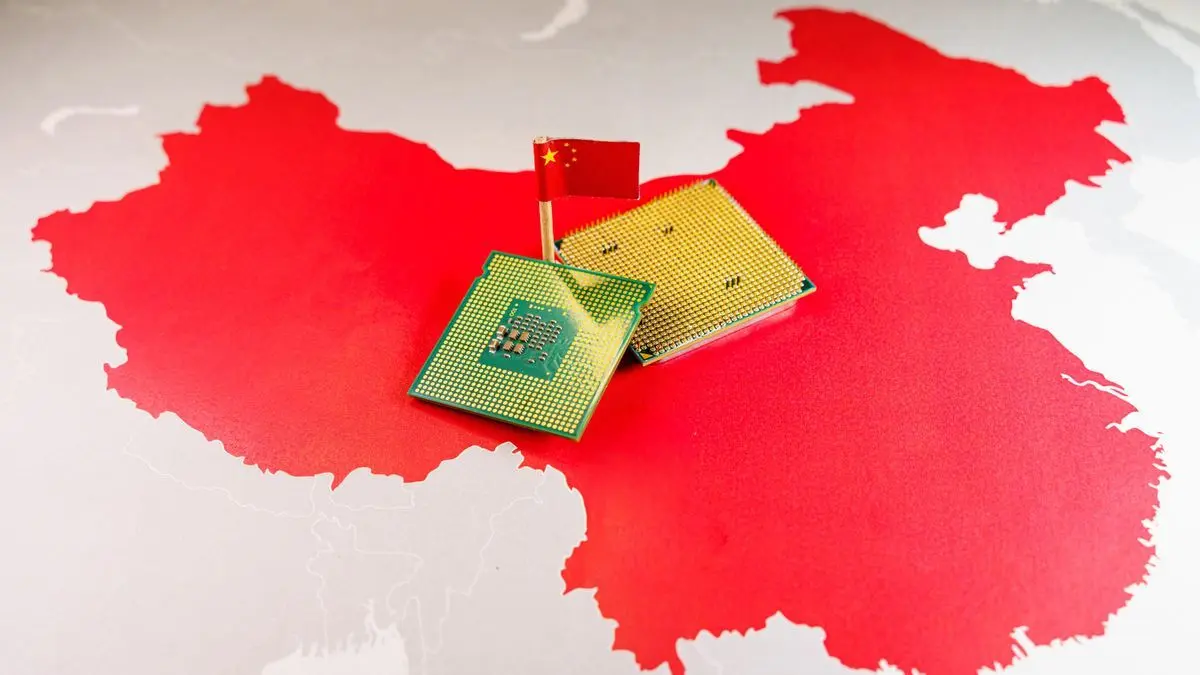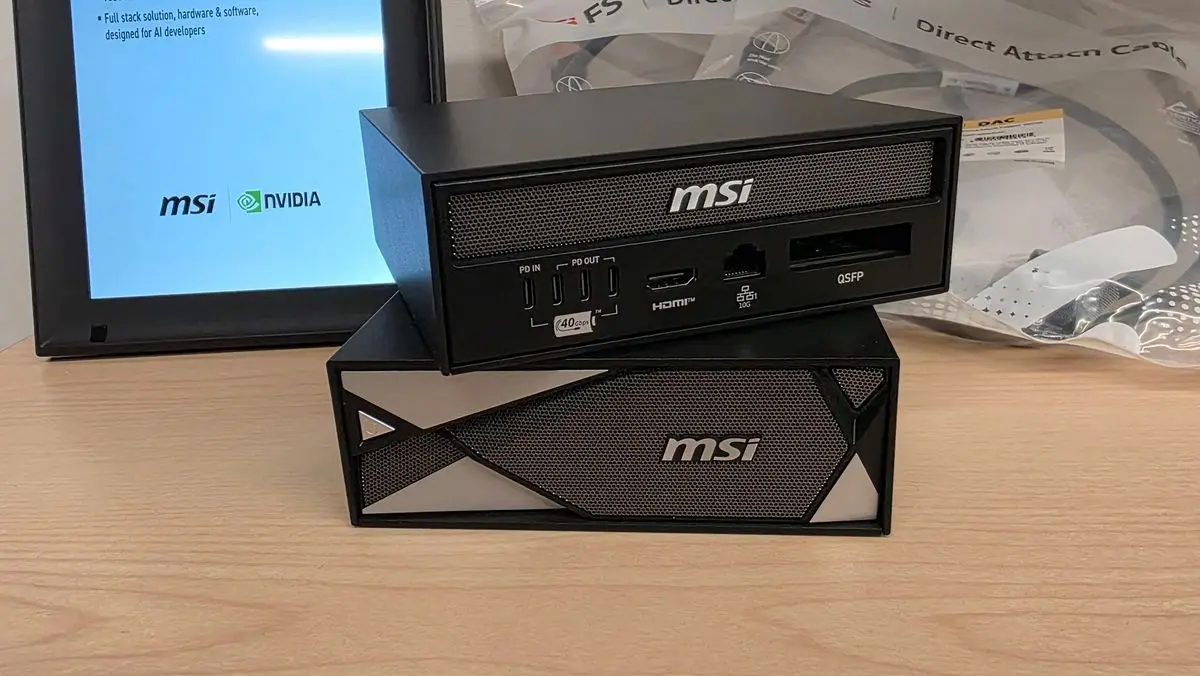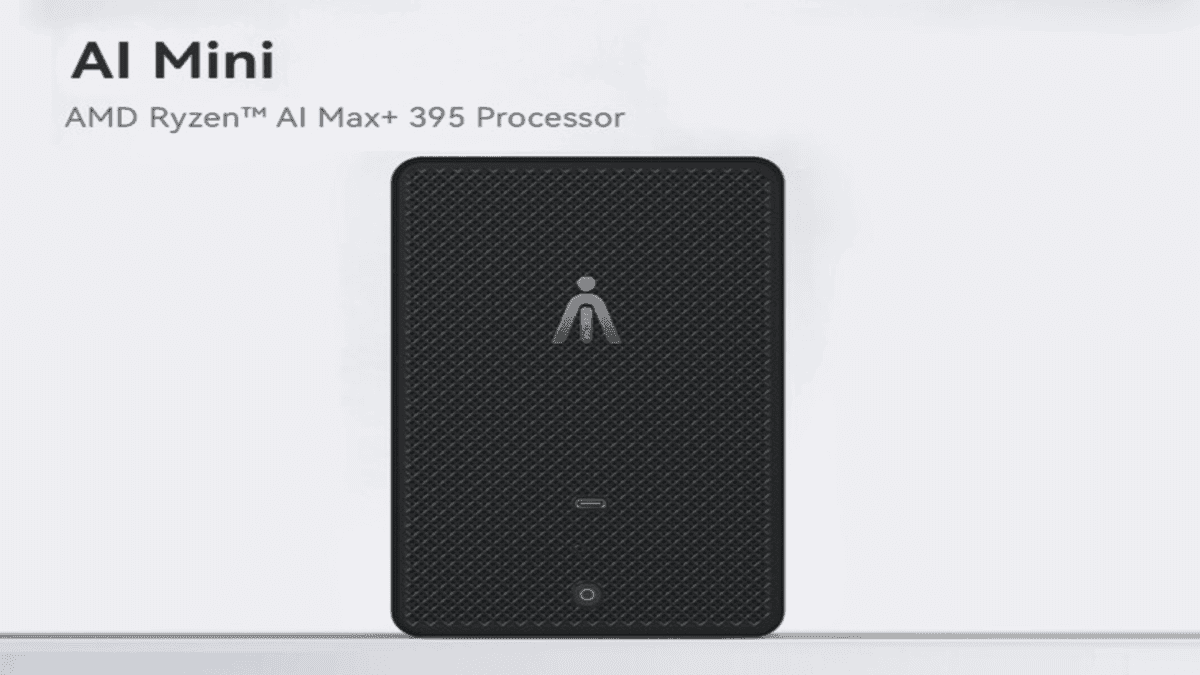China Unveils Groundbreaking Brain-Inspired AI Server: BI Explorer 1
2 Sources
2 Sources
[1]
China builds brain-mimicking AI server the size of a mini-fridge, claims 90% power reduction -- BI Explorer 1 packs in 1,152 CPU cores and 4.8TB of memory, runs on a household power outlet
Chinese scientists have unveiled what they call the "world's first brain-inspired computing entity," an AI "supercomputer" called the BIE-1, inspired by the operation of the human brain. While this claim to be the world's first isn't entirely accurate, the BIE-1 still offers exciting neuromorphic performance numbers, reportedly featuring 1,152 CPU cores and 4.8 TB of DDR5 memory while claiming to consume 90% less power than standard AI datacenter server systems. As reported by the South China Morning Post, the BI Explorer 1 was revealed by the Guangdong Institute of Intelligent Science and Technology at a presentation in Macao. The server's size was likened to a mini fridge by the presenters, an appropriate comparison, as the machine reportedly never exceeds 70°C CPU temperature at max load. The field of brain-like computing is actually not new, despite what the BIE-1 hype would have you believe. Intel's Hala Point neuromorphic computer system is perhaps the best-known brain-inspired computer, powered by 1,152 Loihi 2 CPUs, each capable of simulating one million neurons. The SpiNNaker 2 is another machine from the same mold, designed in a way that does not utilize any SSDs, HDDs, or GPUs to run brain-inspired AI models or store its data. Where the BIE-1 breaks from the pack of today's brain-inspired computers is its size and its performance claims. While the Hala Point and SpiNNaker 2 platforms are traditional server-sized hardware, each taking up multiple server rack units for a full deployment, the BIE-1 is a standalone machine that functions using standard wall power, and claims to draw 90% less power than "a room-sized supercomputer" while offering the same performance. Obviously, the word "supercomputer" has such a loose definition that this claim is difficult to quantify. The BIE-1 "has low power consumption and low noise, and can be called a miniaturised supercomputer, making high-end intelligent computing capabilities within reach," said GDIIST on its website. "It can be easily deployed in homes, small offices and even mobile environments." The BIE-1 contains 1,152 CPU cores (matching Intel's Hala Point's 1,152 Loihi 2 CPUs), 4.8 TB of DDR5 memory, and 204 TB of storage space. The CPU hardware and software alike are both independently developed, unique systems, with the CPU cores designed to imitate brain neurons, and software designed to act as an AI neural network, performing standard AI training and inference tasks in an incredibly non-standard method. Researchers claim the machine reaches training speeds of 100,000 tokens per second and inference speeds of 500,000 tokens per second. To put these huge numbers into context, Nvidia's flagship Blackwell GB200 NVL72 AI server advertises inference speeds of 1.5 million tokens per second. The BIE-1 computer will almost certainly be a big part in making neuromorphic computing at least that much more accessible to new engineers, being sold as a single unit rather than a rack-mounted system or part of a larger data center ecosystem. GDIIST hopes that the BIE-1 can be used for some of the more "important" AI use cases, such as medical research. Prices and availability of the BIE-1 are currently unknown, not least because we have few firsthand sources for the device on the Western internet, but any cutting-edge technology with over 200 TB of high-speed storage is sure to cost at least an arm and a leg. If the BIE-1 does live up to half of its claims, it's sure to be a major win for neuromorphic computing and Chinese AI hardware.
[2]
A brain-like supercomputer that fits under your desk just launched in China
Serving tech enthusiasts for over 25 years. TechSpot means tech analysis and advice you can trust. Forward-looking: A computing device modeled after the human brain - and small enough to fit under a desk - was unveiled in Hengqin, marking a potential breakthrough in supercomputer design. The machine, called BI Explorer (BIE-1), is described by its developers as the world's first "brain-like intelligent computing body." Developed by the Guangdong Institute of Intelligent Science and Technology in collaboration with two of its incubated firms, the system combines the scale of advanced data centers with the compactness of household hardware. Officials unveiled the device on October 24 at the Hengqin Guangdong - Macao Deep Cooperation Zone. BIE-1's designers describe it as "supercomputing in a small refrigerator." Roughly the size of a single-door mini fridge, the unit houses 1,152 CPU cores, 4.8 terabytes of DDR5 memory, and 204 terabytes of storage. Despite its processing density, it produces less than 45 decibels of noise - quieter than a normal conversation - and consumes roughly one-tenth the power of a conventional supercomputer. It remains stable at temperatures below 70°C, even under peak workloads. Engineers say its energy efficiency and low noise levels allow it to operate in offices or laboratories without specialized cooling systems. Nie Lei, head of Neogene Intelligent Technology, compared the design to "compressing the capacity of a massive library into a single quiet bookshelf." The breakthrough centers on a new computational architecture known as the Intuitive Neural Network (INN). This system was designed to emulate human reasoning by blending numeric, symbolic, and logic-based computation, rather than relying solely on traditional pattern recognition. Unlike conventional AI models, which often function as "black boxes," INN networks can display the reasoning steps behind their outputs. Researchers say the system's three-valued logic framework enables it to process numerical, linguistic, and sensory inputs simultaneously. It can perform both model training and inference more efficiently by adapting to new information without discarding prior knowledge, a long-standing challenge in AI known as catastrophic forgetting. Cai Jiang, who heads Suiren Medical Technology and the institute's Joint Laboratory of Multimodal Brain - Computer Interface Systems, said the approach allows the device to "learn with small amounts of data, integrate multiple data types, and reason in a way similar to human cognition." Test results show that BIE-1 completed training on tens of billions of tokens in just 30 hours using a single-node CPU setup. Its training and inference throughput - 100,000 and 500,000 tokens per second, respectively - is comparable to large GPU-based clusters used in current artificial-intelligence research. According to the development team, these performance levels cut hardware costs by about half and reduce energy consumption by up to 90 percent compared with traditional high-performance computing systems. The device also achieved higher accuracy on several benchmark datasets used to evaluate AI models. Developers view this as evidence that brain-inspired design can advance computational performance and sustainability simultaneously. Zhang Xu, director of the Guangdong Institute and an academician of the Chinese Academy of Sciences, said the achievement could "redefine how computing power is produced and deployed." He believes the system's compact form factor will allow BIE-1 to extend beyond research labs and data centers into homes, offices, and small enterprises. He pointed to potential applications ranging from personalized digital assistants to medical diagnostics, financial analytics, and other high-precision computational fields, noting that users can customize the system for their specific needs. Beyond speed and accessibility, developers emphasize the system's efficiency and environmental goals. The Guangdong Institute positions BIE-1 as a model for low-carbon computational infrastructure, with potential benefits for both national data centers and enterprise networks. Project leaders describe it as a step toward "a greener, more agile, and more interpretable era" of intelligent computation - one where machines not only calculate outcomes but also explain how those outcomes are reached. Image credit: Shanghai Securities News
Share
Share
Copy Link
Chinese scientists have developed a compact, energy-efficient AI server called BI Explorer 1 (BIE-1), which mimics human brain function. This mini-fridge-sized device boasts impressive computational power while consuming significantly less energy than traditional supercomputers.
A New Era of Brain-Inspired Computing
Chinese scientists have unveiled a groundbreaking AI server that promises to revolutionize the field of neuromorphic computing. The BI Explorer 1 (BIE-1), developed by the Guangdong Institute of Intelligent Science and Technology, is being hailed as the "world's first brain-inspired computing entity"
1
2
.
Source: Tom's Hardware
Compact Powerhouse
The BIE-1 packs an impressive punch in a surprisingly small package. Described as "supercomputing in a small refrigerator," this mini-fridge-sized device houses:
- 1,152 CPU cores
- 4.8 terabytes of DDR5 memory
- 204 terabytes of storage
Despite its compact size, the BIE-1 boasts performance comparable to much larger systems, with researchers claiming training speeds of 100,000 tokens per second and inference speeds of 500,000 tokens per second
1
.Energy Efficiency and Accessibility
One of the most remarkable features of the BIE-1 is its energy efficiency. The developers claim it consumes 90% less power than traditional AI datacenter server systems while offering comparable performance
1
. This efficiency allows the device to run on a standard household power outlet, making it accessible for deployment in homes, small offices, and even mobile environments2
.Brain-Like Architecture
The BIE-1's innovative design is based on a new computational architecture called the Intuitive Neural Network (INN). This system aims to emulate human reasoning by combining numeric, symbolic, and logic-based computation
2
. Unlike conventional AI models, the INN framework allows for:- Processing of numerical, linguistic, and sensory inputs simultaneously
- Adapting to new information without discarding prior knowledge
- Displaying reasoning steps behind outputs, improving interpretability
Related Stories
Potential Applications and Impact
The compact size and impressive performance of the BIE-1 open up a wide range of potential applications. Zhang Xu, director of the Guangdong Institute, suggests that the system could be used for:
- Personalized digital assistants
- Medical diagnostics
- Financial analytics
- Other high-precision computational fields
The developers position the BIE-1 as a model for low-carbon computational infrastructure, with potential benefits for both national data centers and enterprise networks
2
.Challenges and Competition
While the BIE-1 represents a significant advancement in neuromorphic computing, it's important to note that it's not the first of its kind. Other brain-inspired systems, such as Intel's Hala Point and the SpiNNaker 2, have paved the way in this field
1
. The BIE-1's unique contribution lies in its compact size, energy efficiency, and accessibility.🟡 senseless_whitespace=References
Summarized by
Navi
Related Stories
China Unveils SpikingBrain 1.0: A Revolutionary 'Brain-Like' AI Model
10 Sept 2025•Technology

Cortical Labs Unveils CL1: World's First Commercial Biological Computer Using Human Brain Cells
06 Mar 2025•Technology

MSI Unveils EdgeXpert MS-C931: A Powerful Desktop AI System, But Is It Really a 'Supercomputer'?
19 May 2025•Technology

Recent Highlights
1
AI Chatbots Sway Voters More Effectively Than Traditional Political Ads, New Studies Reveal
Science and Research

2
OpenAI declares code red as Google's Gemini 3 gains 200 million users in three months
Technology

3
Trump approves Nvidia H200 chip exports to China with 25% revenue cut, defying Senate concerns
Policy and Regulation





